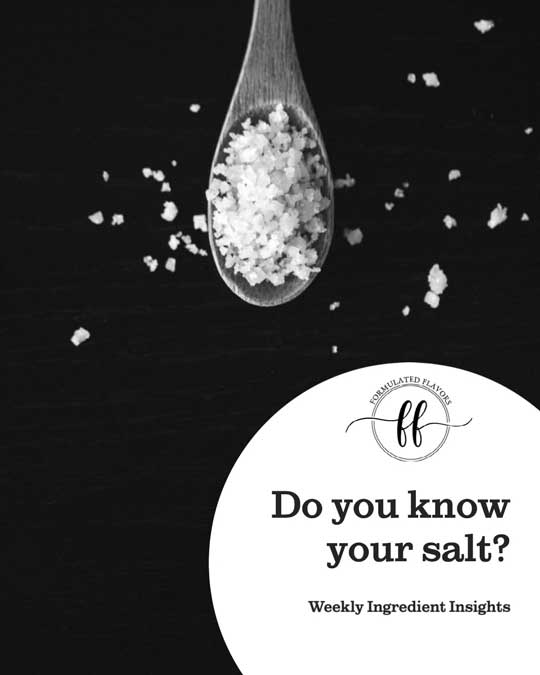Do you know your Salt?
A deep-dive into sodium level comparisons.
Salt is unarguably one of the most pivotal ingredients, we are definitely not the first to say that. It is, however, perhaps an ingredient so common and important it is often not given the thought that it should. Rather than providing a lengthy read about, which can definitely be worth the time, we want to start simple by addressing salt’s fundamental chemical: sodium.
Look at the typical salt label and it is (or should be) mostly empty. While iodized salts mix in iodine and sometimes potassium, the core of any salt is its sodium which is the source of salt’s flavor-enhancing capabilities. As a sample, here is a table containing some sodium levels off some major salt brands ranked by their saltiness. The brand, type, and coarseness have been noted, but the column of interest is the sodium level per ¼ tsp, the standard volumetric serving size.
| Brand | Type | Coarseness | Sodium
(mg per ¼ tsp) |
| Morton | Lite Salt | Fine | 280mg |
| Diamond Crystal | Kosher | Coarse | 280 mg |
| Morton | Kosher | Coarse | 480 mg |
| Kroger | Kosher | Coarse | 480 mg |
| Morton | Sea Salt | Fine | 560 mg |
| Diamond Crystal | Sea Salt | Fine | 560 mg |
| Morton | Sea Salt | Coarse | 580 mg |
| Morton | Iodized Salt | Fine | 590 mg |
| Diamond Crystal | Iodized Salt | Fine | 590 mg |
| Kroger | Iodized Salt | Fine | 590 mg |
| Signature Select | Iodized Salt | Fine | 590 mg |
While it is true that food should be salty, implying table salts would be better, the key is striking the right balance of salt and making sure its evenly spread around the dish. Many chefs steer away from table salt, for this reason, its high sodium levels make the chance for salt pockets (meaning overly salty bites) higher if it fails to dissolve as well as less sensitivity, given the high density of sodium per volume. It is for this reason a brand like Diamond Crystal is recommended for its lower amounts of sodium (about half other common kosher salts). This ensures more salt is added by volume for less sodium, giving the food a more even spread of salt and a much better ability to scale up and down in salt. Adding an additional gram of Morton is the equivalent of adding 2 more grams of Diamond Crystal. Ensuring food is well salted for every bite is easier if there is more of it in the food, so make sure you know your salt and how much to use for your favorite recipes.
Now that you know the sodium level comparisons based on the brand and type of salt you use, you can adjust the salt amount per recipe as needed to make sure you are always creating food with an accurate desired sodium level!


I think it’s interesting the flavor of finishing salts from around the globe. Right now we’re using coarse flakes from Peru and prior to this we were using a finishing salt from Iceland! Different flavors in each!
That is interesting! I think that looking at the different minerals and other compounds in salt would also be a very interesting insight to dive into!